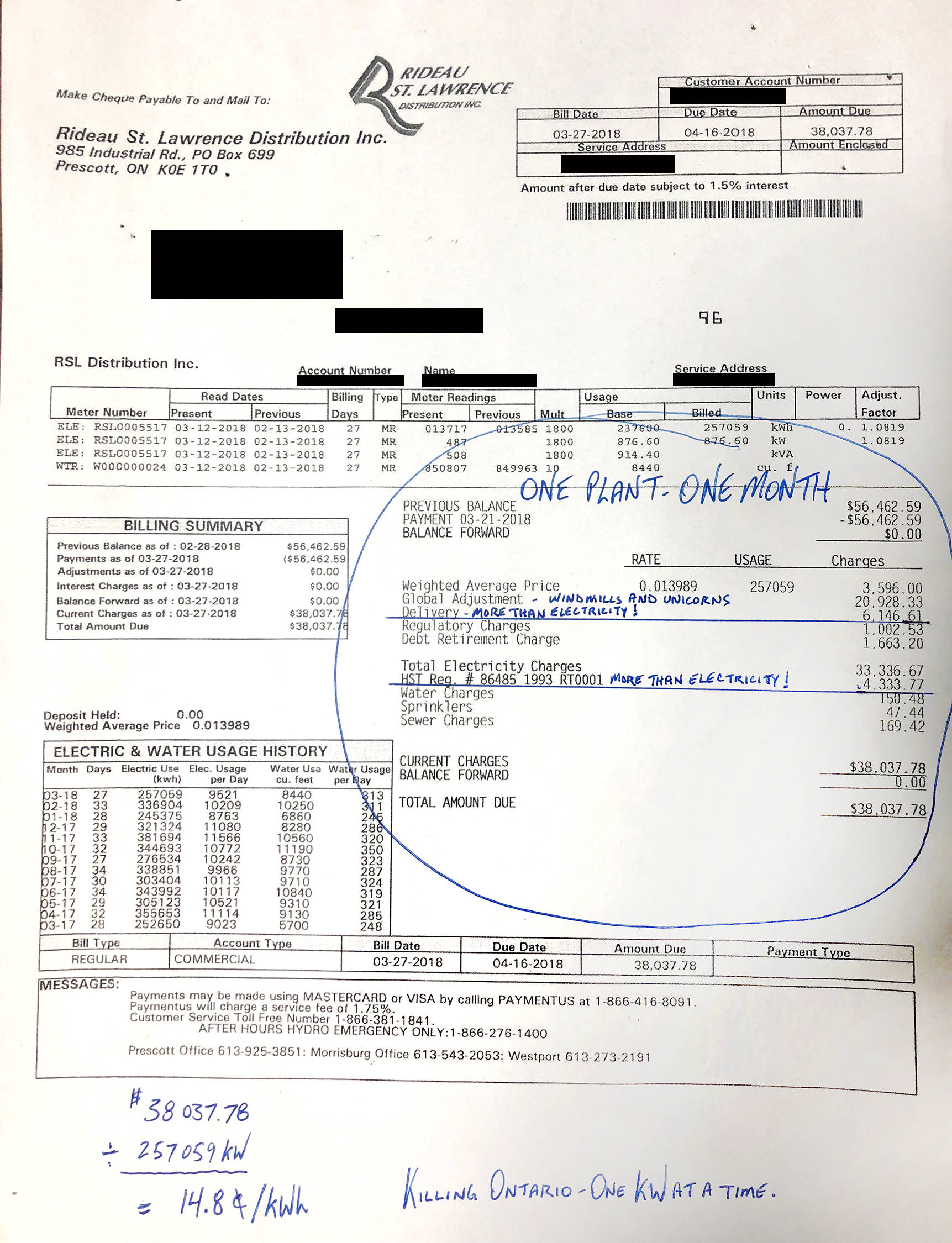A $38,000 power bill for a company in Ontario is raising red flags for what Alberta’s residents may face.
Red Deer-Lacombe MP Blaine Calkins has been actively speaking to constituents about the breakdown of the bill, which shows that almost $21,000 of it was a line item called “Global Adjustments (GA).”
After the untimely death of MP Gord Brown, Calkins said that colleagues will go to his area to meet with constituents and while speaking with one company noticed power bills that were posted on the company’s bulletin board. The bills seemed quite high for the size of the operation.
“The cost of the electricity on the bill was $3,600,” said Calkins.
“So basically, 10 times the cost of the actual electricity.”
The company is a light manufacturing outfit that makes wires out of aluminum and copper for commercial purposes, said Calkins.
Here is the full breakdown of the bill:
• Weighted Adjustment Price, $3,596
• Global Adjustment, $20,928
• Delivery, $6,146
• Regulatory Charges, $1,002
• Debt Requirement Charge, $1,663
On top of those charges is HST, which was factored after the other items at $4,333. The company also paid water, sprinkler and sewer charges totalling $366 and change.
The company paid $56,000 the month before and staff post the bills on bulletin boards for staff to see the extent of the issue and also mark up the bill with their thoughts on it.
Calkins’ wants Albertans to know that power policies set out in Ontario are similar to the ones being laid out in Alberta such as the reduction of coal and natural gas-fired electrical generation.
“This is what (Albertans) power bills will, or possibly could look like,” he said.
“We’re not blessed with the hydro electricity that Ontario is blessed with. We do have wind power here but that is not a guarantee all the time either.”
Calkins added that it’s the same people leading the charge with the Liberal Government that brought about those changes in Ontario.
“These policies, they’re disastrous,” said Calkins. “$21,000 a month for this Global Adjustment fee…that’s a month’s salary for five people making $60,000 a year.”
“I think people are starting to wake up to the reality that they cannot afford a 10-fold increase in their power bill,” said Calkins.
In a request for response, Ontario’s Ministry of Energy stated that the electrical system costs are recovered through charges on the electricity bills. These three fees cover electricity generation, transmission and maintaining the system.
“Of the three charges, the largest is the commodity charge,” states an emailed response. “It has two components, the first is the wholesale market price, known as the Hourly Ontario Energy Price (HOEP).”
The second part to that is the Global Adjustment as seen in the bill, which accounts for two areas: conservation programs, and the difference between HOEP and regulated and contracted revenue that generators receive.
Some notes to this include that all generators receive HOEP for the electricity they supply, which is determined by supply and demand.
Generators also receive additional payments to make up the difference between revenue generated through the wholesale market and their required regulated revenue. That difference comes from the Global Adjustments that customers end up paying.
“It should be noted that HOEP and GA are inversely related; as the market price decreases, GA payments increase,” states the response.
“HOEP is primarily influenced by supply, demand and fuel (i.e., natural gas) costs. Although HOEP is currently relatively low, GA is comparatively high in order to fully recover costs.”



